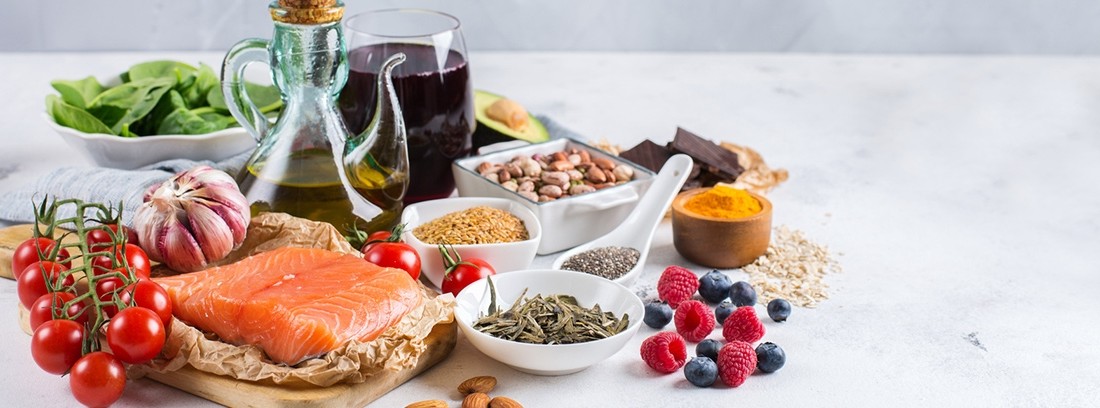Minerals and vitamins in diabetes

Metabolic reactions continually occur in the human body. These reactions generate, among others, the so-called free radicals which are substances that injure the wall of the arteries and facilitate the appearance of atheromatous plaque.
In diabetes there is a greater production of these radicals and, therefore, greater. Oxidative stress has been linked to an increased risk of cardiovascular disease and retinal, kidney, and nerve damage in diabetic individuals. Therefore, a adequate intake of antioxidants can help reduce these negative effects of oxidative stress in the diabetic.
Natural antioxidants for diabetics
The body has natural antioxidant mechanisms. Some of them are made up of some vitamins:
- Vitamin A (in its beta-carotene form)
- Vitamin E (in its alpha-tocopherol form)
- Vitamin C (as ascorbic acid)
- Minerals such as selenium, zinc, and magnesium.
These natural antioxidants are found mostly in fruits and vegetables. A varied diet rich in these foods will provide enough of these vitamins and minerals to avoid cell damage reduce it. Consider:
- Take 2-3 pieces of fruit a day, one of them from the citrus group.
- Juice: Fruit in the form of juice produces rapid rises in glucose (it is like taking an envelope of sugar), so whole fruit is best recommended.
However, although in the experimental laboratory the administration of antioxidant substances decrease oxidative stress and improves the functionality of the arterial wall, it has not been shown that the supplementation of these vitamins and minerals in pill form in diabetics achieves this. Therefore, the recommendation is do not administer vitamin or mineral supplements in pills to diabetics. It is only recommended in restrictive diets to reduce weight (<1100 kcal / day), supplementation with some vitamins may be indicated.
Sodium and potassium
We must make a separate mention of sodium (salt) and potassium. Numerous studies document that a diet rich in salt is associated with a increased cardiovascular mortality in diabetics. In addition, type 2 diabetes is frequently associated with high blood pressure. For all this, it is convenient reduce sodium (salt) intake in these patients. Simply removing the salt shaker from the table can reduce blood pressure by 2-8 mmHg. When there is moderate hypertension in addition to diabetes, sodium intake will be much more limited.
Recommendations for diabetics
Recommendations in individuals diabetic, hypertensive and non-hypertensive, are the following:
- Salt moderation in all hypertensive patients undergoing treatment with pills for hypertension, because in general the drugs lose part of their effectiveness when the patient ingests an excess of salt.
- Potassium salts can be used, but caution should be exercised because, although they contain 50% less sodium, they still provide sodium and should not be used when the patient is being treated with certain drugs such as potassium-sparing diuretic drugs or potassium inhibitors. angiotensin converting enzyme (ACEI).
- Avoid or limit foods with a high amount of sodium: salted fish, brines, preserves, olives, salty snacks, precooked foods, carbonated waters, cured cheeses, cold cuts, etc.
- Read the labels of packaged foods. Low sodium are those that contain less than 140 mg of sodium (6 mEq) per serving.
- Use other enhancers of flavor as substitutes for salt in the preparation of food: vinegar, lemon, garlic, onions, spices or aromatic herbs.
- Do not drink sparkling mineral waters and monitor the composition of the others.
The Benefits derived from these measures will depend on their long-term compliance. Very severe restrictions are rarely met, so, as a general rule, or you have to restrict but moderate the consumption of salt.
Other measures aimed at regulate blood pressure control they are the increase of ingested potassium, being the preferable strategy to increase the consumption of foods rich in potassium (fruits and vegetables) and not so much the use of potassium supplements.
(Updated at Apr 14 / 2024)